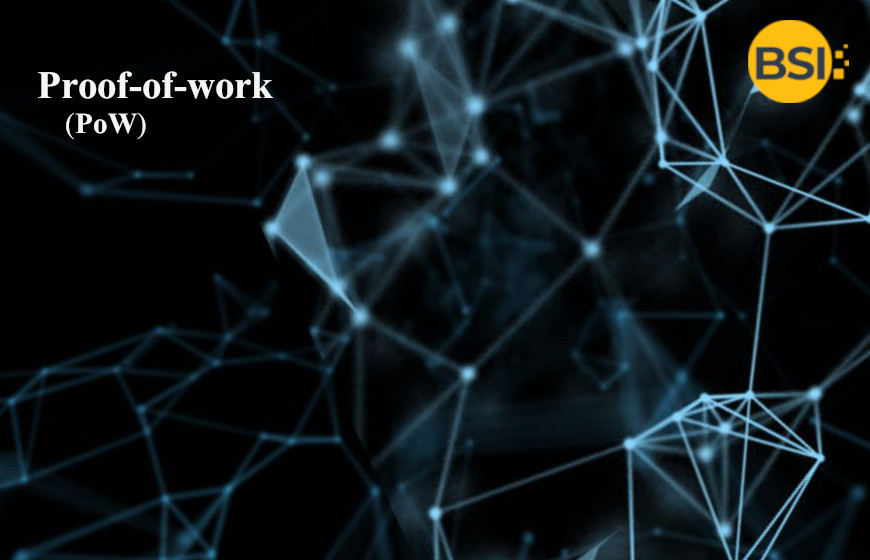What is Proof of Work (PoW)? – Business Software India

31st March, 2021 – BSI
What is Proof of Work (PoW)? – Business Software India
PoW is the first Blockchain consensus algorithm used for Bitcoin, Ethereum, Litecoin, and many others. Consensus in each blockchain node makes the whole blockchain system uniform. Verification of each node enables all the nodes in the network for a common agreement, and thus consensus algorithm plays a significant role in the blockchain.
In traditional digital currencies, like central bank-issued currencies circulated through banks, have a central point, or a single ledger (you may consider that the bank database) keeps the record of each account and how much balance they have. However, in blockchain, to calculate the balance of an address, we have to calculate through all the transactions and get the balance. Since the ledger is distributed in blockchain (DLT), the ledger only carries out transactional records. With proof-of-work, the transaction gets validated, which can be used to calculate the balance. Proof-of-work is a consensus algorithm where participating nodes in a blockchain network validate a transaction following a transaction trail. When consensus is met (like voting, where most nodes validate the transaction as a valid one), the transaction is accepted by the network and written into the ledger.
Since all nodes have the exact copy of the ledger and the entire ledger is having a chain-link of the previous transaction, it is only possible to make a change to blockchain or make counterfeit transaction only if the majority of the nodes are captured by the attacker (which is close to impossible). In a blockchain, the ledger keeps blocks which is a set of data and generally contains multiple transactions. Since blocks are chain-linked with the previous block with a hash (an encrypted key of entire data of the previous block), a single letter/digit change in one block will change the hash altogether and will not match with the linked block (the next block that is having the hash of the block). Hence the data in blockchain is immutable. That is why the network can run being decentralized and tamper-proof.
Historically, Cynthia Dwork and Moni Naor first introduced proof-of-work in 1993 to tackle DoS or other service abuses like spam, formally used by Markus Jakobsson and Ari Juels in a publication in 1999. This latter point was adopted by bitcoin as a foundation of consensus and became mostly used by the majority of cryptocurrencies to date.
The consensus algorithm’s target is to make all the participating nodes trust each other in an environment where nodes do not trust each other. This is vital as every transaction is accepted for inclusion in a block in DLT only when the consensus is met. With the consensus, all the transactions are validated and included in a block added to the ledger. Miners (special computers in the blockchain network) compute to solve a complex mathematical problem to add a block in the ledger, hence the name Proof-of-Work. The problem gets more complex over time.
In PoW based blockchains, PoW is used to validate a transfer transaction and mint a coin. To explain Proof-of-Work in a very simplistic manner, all the nodes are given a mathematical challenge they need to solve. The solution uses an encryption algorithm that gives an alphanumeric text based on the algorithm. The miners’ goal is to create a hash that matches with the “target” of the challenge. Since the probability of generating a hash using the particular encryption algorithm to meet the “target” is very low, the miners have to work hard (more computation with higher computational resources) to discover the expected hash. Once the hash is computed out, it is broadcasted to the network, and miners are rewarded with a certain number of coins. Typically it takes about 10 minutes in bitcoin blockchain to meet the target.
Since proof-of-work is aimed at keeping the integrity of the block data that is getting included in the chain, besides altering the old data, double-spend is a potential risk that a particular block may contain. However, the reward system in PoW keeps miners honest, thus keeps the blockchain error-free. In a private blockchain network, where nodes are trusted as participating nodes are certified by Certifying Authority (CA), PoW does not bring much value. However, in a public blockchain where the entire system is trustless, PoW one most vital parts of the blockchain to make it valid.

